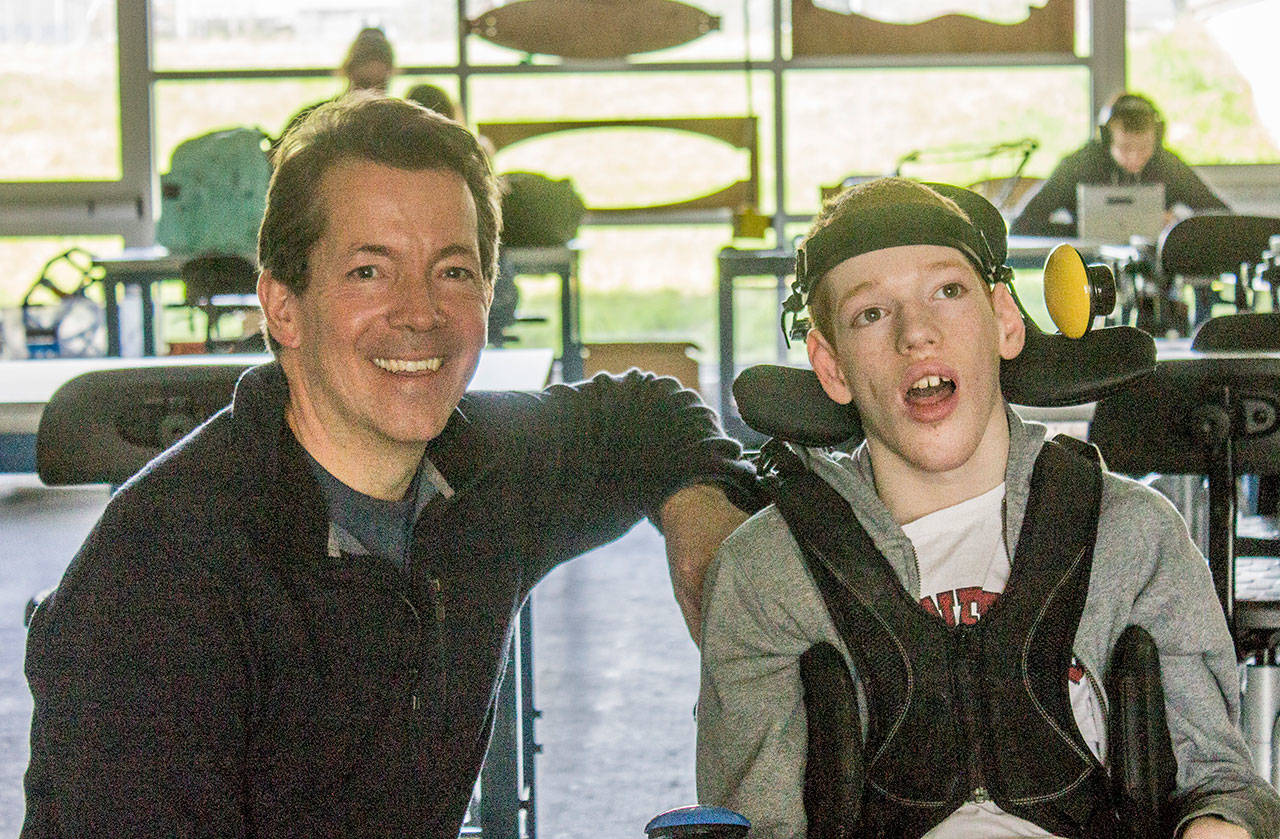Imagine what life would be like if you couldn’t express your thoughts.
That’s the subject of a new engineering course at Stanford University, based on Friday Harbor High School freshman Zach Crighton’s reality. Zach’s Cerebral Palsy limits his speech and movement.
“I came to realize that he was very bright and what he truly lacked was a means of self-expression,” said Stanford Professor John Moalli.
While volunteering for a Friday Harbor High School STEM class, Moalli — who lives in town and flies to Stanford, weekly — witnessed Zach design a logo for an assignment. His teaching assistant drew the image that Zach explained through a speech iPad app. After a while, the method worked, but Moalli could see how better technology design could help Zach better communicate.
“I thought an interesting concept would be to teach design through the lens of engineering for the differently abled,” said Moalli. “I recognized that he was not all that different from my Stanford students and that they would benefit from this realization.”
That was in the beginning of the school year and the Stanford class, entitled Dare to Care: Compassionate Design, started with up to 16 freshmen and sophomores this April. Zach, his mom, his teaching assistant, and a STEM teacher attended the second class on a private plane, equipped for Zach’s wheelchair and chartered by Moalli.
“It was so cool because we got to ride in a plane from Friday Harbor all the way to Palo Alto,” said Zach about his first plane ride.
In the class, students treated him like a peer, said his mom Kelly, which doesn’t always happen.
“There were about 20 kids, all asking me questions, mainly about my chair,” said Zach.
They were assigned to redesign the headrest on Zach’s wheelchair, then a tool he uses to help him rise from it. Designs made the headrest more comfortable and gave the stander more purpose, like helping to create motion in his legs to fight the muscle degradation caused by his neurological disorder.
While brainstorming, one student asked Zach if he’d like to use different body parts to operate his iPad, other than his head and right hand, which he uses now. Moalli asked Zach to blink, which he did, opening the possibility of using an eye tracker to select choices on a computer, like Google Glass.
“It seems so simple to us, but honestly, we never asked him,” said Kelly.
Nothing will actually be produced by the class, but Zach will be evaluated for an eye tracking service, next school year, through Central Washington University, which helps him assess new technologies. The software could help Zach communicate independently, without a teaching assistant to ask him questions to solicit responses.
“Part of this was for Zach, who is totaling capable of abstract thought and artistic expression and ideas, if there was a way to help him express in a much more abstract way than yeses and nos,” said Friday Harbor High School STEM Director Derek Smith.
Zach recently began using the STEM building’s technology to better understand class content. For instance, he watches videos on a virtual reality headset so he can clearly see images that would otherwise be too far away from him in a typical classroom.
Smith applied to discuss and demonstrate breakthroughs like this at next fall’s TEDx San Juan Island talk, though it hasn’t been finalized.
“Our goal is always how can we enrich the lives of everyone and Zach is our point man,” said Smith.
Moalli is already receiving requests to collaborate on the course from people around the world, who, like him, have never seen a design class for the disabled, even in a world where new technology creates new possibilities.
“I’m confident it will happen in Zach’s lifetime, that he will be able to communicate with everybody,” said Kelly.




